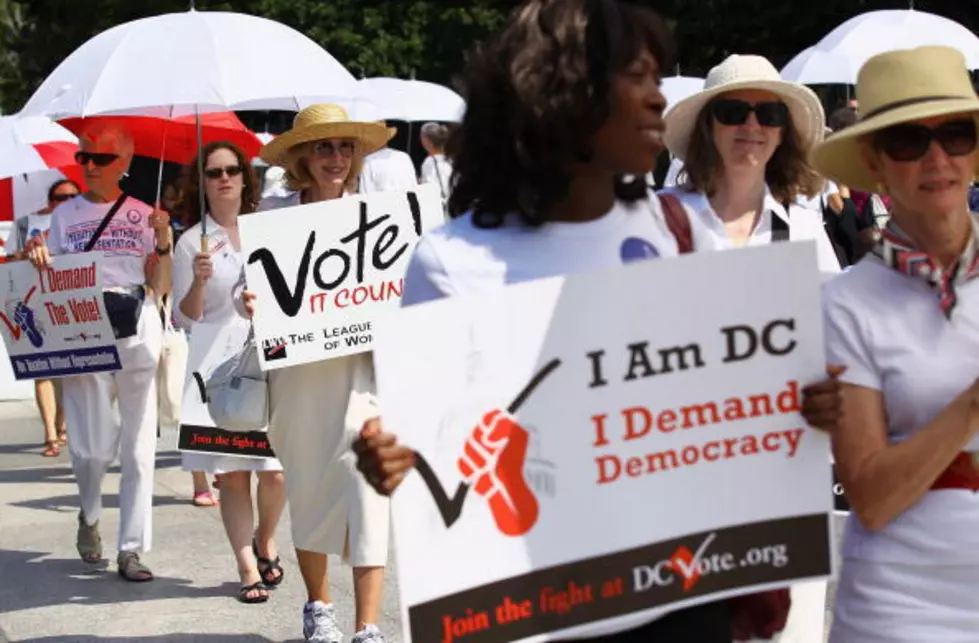
The 19th Amendment: Women’s Right to Vote
The Nineteenth Amendment to The Constitution
The right of citizens of the United States to vote shall not be denied or abridged by the United States or by any State on account of sex. Congress shall have power to enforce this article by appropriate legislation.
The Anthony Amendment
On August 26, 1920 the 19th Amendment was put into effect that ended discrimination against women in the voting booth. The “Anthony Amendment,” was named after the drafters, Susan B. Anthony and Elizabeth Cady Stanton. What was to eventually become the 19th amendment was introduced in the Senate by Republican Senator Aaron A. Sargent of California and was defeated by a vote of 16 to 34 in 1887.
The Vote of 1920
The more things change, the more they stay the same. In 1920 the Wilson Administration began pushing hard to pass Women’s Suffrage before the 1920 election. At the beginning of the “Roaring 20’s” more and more women were coming into their own and politicians saw an opportunity to do the right thing — but more importantly bring a huge voting block to their side.
On January 12, 1915 it failed in the House by a vote of 204-174. It was brought again on January 10,1918. In spite of a passionate appeal by President Wilson, it failed by two votes in the House after passing in the Senate. On Feb 10, 1919 it again failed by one vote.
Special Session
With the 1920 election looming there was a definite need by both parties to pass the 19th Amendment. Wilson called a special session of Congress and the proposal was presented to the House and passed on May 21, 1919 with 42 more votes than needed. It was brought to the Senate on June 4, 1919 and after much debate finally passed by a vote of 56 to 25.
Ratification by the States
The first three states to ratify the amendment were Wisconsin, Illinois and Michigan all on June 10, 1919 because their legislatures were in session at the time. Montana ratified it on August 2, 1919.
It took 36 of the then 48 states to add the 19th Amendment to the Constitution. States that rejected the amendment all eventually adopted it. Here are some of the states that rejected it and the dates they eventually adopted it.
- Maryland (March 29, 1941 after being rejected on February 24, 1920; not certified until February 25, 1958) 38 Years Later
- Virginia (February 21, 1952, after being rejected on February 12, 1920) 32 Years Later
- Alabama (September 8, 1953, after being rejected on September 22, 1919) 33 Years Later
- Florida (May 13, 1969) 49 Years Later
- South Carolina (July 1,1969, after being rejected on January 28, 1920; not certified until August 22, 1973) 53 Years Later
- Georgia (February 20, 1970) 50 Years Later
- Louisiana (June 11, 1970) 50 Years Later
- North Carolina (May 6, 1971) 51 Years Later
And the winner is …
- Mississippi (March 22, 1984) Just 64 Years Later
Some Final Thoughts
The amazing thing about researching this blog is how similar government works today as it did in the 1800 – 1900’s. Politics, rather than doing the right thing, seemed to trump the long road in allowing women one of the fundamental rights we all take for granted. Even cases before the Supreme Courts ruled unanimously against women’s right to vote.
In today’s world the right to vote would be passed by both houses unanimously and immediately signed by the President. It seems contradictory that a country that touted being so free could be so restrictive to it’s own people based on sex or race. Societal norms of the day often cloud the issues for our elected leaders.
But that’s the great thing about the United States of America. We have the ability to self-correct when we go down the wrong path. Unfortunately, discrimination in some form will probably always be with us, but that doesn’t mean that we have to accept it. Doing the right thing is not always easy — or expedient. But it’s still the right thing.
More From KMMS-KPRK 1450 AM




![[POLL] Will You Got Back to Restaurants and Bars When They Open?](http://townsquare.media/site/8/files/2017/04/Adam-Berry.jpg?w=980&q=75)
![[POLL] Should wearing a mask in public be mandatory?](http://townsquare.media/site/8/files/2020/04/GettyImages-1213079528.jpg?w=980&q=75)
![[POLL] Will You Tune Into The Tom and Shane Saturday Show?](http://townsquare.media/site/8/files/2020/04/TomShaneFB.jpg?w=980&q=75)

![[POLL] Will The Tourists Return To Montana?](http://townsquare.media/site/119/files/2019/04/Tourism-1.jpg?w=980&q=75)
